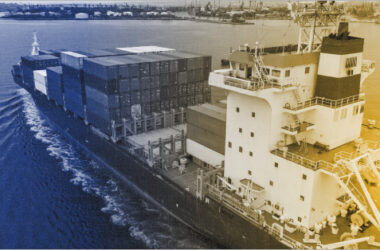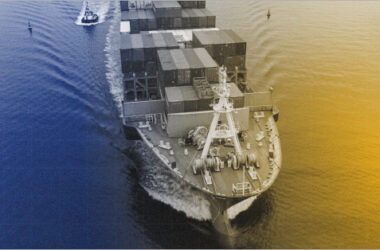Marine Insurance is a crucial tool in the global trade and shipping industry, ensuring the safety of goods and minimising financial risks during transportation. Among the various types of marine insurance policies available in India, the Marine Open Policy stands out as a convenient and comprehensive solution for businesses engaged in frequent shipments of goods.
This blog explores the concept, features, benefits and relevance of a Marine Open Policy in India.
Understanding Marine Insurance
Marine Insurance provides financial protection against risks and damages associated with maritime activities. It covers losses or damages to ships, cargo, terminals and any means of transportation used for moving goods from one location to another.
Governed by the Marine Insurance Act, 1963, Marine Insurance plays a vital role in safeguarding the interests of traders, shipping companies and logistics providers, ensuring smooth operations in the global supply chain.
The different types of Marine Insurance policies include:
- Hull Insurance – Covers physical damage to ships or vessels, including machinery, caused by perils like collisions, fire or natural disasters.
- Cargo Insurance – Protects goods in transit against risks such as theft, loss or damage during transportation by sea, air, road or rail.
- Freight Insurance – Covers the loss of freight revenue due to damage or non-delivery of goods.
- Voyage Policy – Provides coverage for a specific voyage from one port to another.
- Time Policy – Offers insurance for a vessel for a fixed time period, typically up to one year.
- Mixed Policy – Combines features of both voyage and time policies, offering broader coverage.
- Marine Open Policy – Designed for businesses with frequent shipments, offering automatic coverage for multiple consignments over a period.
These policies cater to varying needs and ensure comprehensive protection for maritime activities.
What is a Marine Open Policy?
A Marine Open Policy is a flexible and comprehensive insurance policy designed specifically for businesses that regularly transport goods, whether by sea, air or land while buying or selling. Unlike a specific voyage policy, which covers only a single shipment, an open policy provides continuous coverage for all shipments made during the policy period.
Marine Open Insurance is particularly beneficial for businesses involved in exports, imports and domestic trade. It eliminates the need to issue a separate policy for each consignment, making it a time-saving and cost-effective solution.
Key Features of a Marine Open Policy
1. Continuous Coverage
A Marine Open Policy provides uninterrupted and consistent insurance coverage for all consignments shipped within the scope of the agreement, typically for a one-year period. Thus, it safeguards the cargo from all risks like damage, theft or loss throughout the transit journey.
2. Declaration of Shipments
The insured must declare shipment details periodically to the insurer, including the value, nature of goods and mode of transport. Declarations can be made monthly, quarterly or on a shipment-to-shipment basis, as per the agreement.
3. Flexibility
The policy is adaptable to different types of cargo and modes of transportation, including sea, air, road and rail.
4. Pre-Determined Sum Insured
A limit of liability (sum insured) is established in the open policy, ensuring that the coverage does not exceed the agreed amount. Premiums are based on the estimated annual turnover and are adjusted periodically.
5. Customisable Clauses
The Marine Open Policy can be tailored to include specific clauses based on the nature of the business and goods. Some commonly included clauses are:
- Institute Cargo Clauses (A, B or C) – Offering different levels of coverage ( such as all risks, limited risks or basic coverage)
- Accumulation Clause – Covers excess interests if goods accumulate beyond the insured limit due to unavoidable delays.
- Errors & Omissions Clause – Ensures minor mistakes in declarations do not invalidate coverage.
- Termination of Transit Clause – Defines when coverage ends once transit is completed or goods are stored at the destination.
6. Premium Adjustments
Premiums are adjusted periodically (monthly or quarterly) based on the declared shipment values and risk factors.
How Does a Marine Open Policy Work?
1. Policy Issuance
The insurer issues a Marine Open Policy for a fixed period (usually one year) based on the estimated value of shipments.
2. Declaration Process
The insured declares shipment details to the insurer as per the agreed reporting schedule.
3. Premium Payments
An initial premium is paid at the time of policy issuance. Additional premiums are adjusted periodically based on the total shipment values declared.
4. Claim Settlement
In the event of loss or damage to goods during transit, the insured can file a Marine Open Policy claim by submitting the necessary documents, including:
- Bill of lading
- Invoice
- Survey report
- Any additional supporting documents required by the insurer
Risks Covered by a Marine Open Policy
The coverage depends on the terms and clauses chosen in the policy. However, common risks covered include:
- Natural Disasters – Loss or damage due to storms, earthquakes, volcanic eruption, floods, lightning and other natural calamities.
- Accidents – Accidental damage to cargo caused by collisions, sinking, grounding or overturning of the transport vessel.
- Theft and Pilferage – Protection against loss due to theft or pilferage.
- Fire and Explosion – Coverage for goods damaged or destroyed by fire or explosion during transit.
- Jettison – Loss of goods thrown overboard to save or stabilise the vessel during emergencies.
- General Average – Shared financial liability among all cargo owners ( the insurer’s part only) for losses incurred to save the cargo during an emergency.
Exclusions in a Marine Open Policy
While Marine Open Insurance offers extensive coverage, certain exclusions apply:
- Loss due to willful misconduct or negligence by the insured.
- Damage resulting from improper/ inadequate packaging or inherent defects in the goods.
- Delivery delays, leading to indirect losses, unless covered under special clauses.
- Ordinary leakage or wear & tear
- Nuclear risks.
Who Can Avail a Marine Open Policy?
A Marine Open Policy is ideal for:
- Exporters and importers engaged in international trade.
- Domestic traders with frequent intercity or interstate shipments.
- Logistics companies and freight forwarders managing cargo for clients.
- Manufacturers and distributors transporting raw materials or finished goods regularly.
- Wholesalers and distributors
- E-commerce platforms
- D2C businesses
Benefits of a Marine Open Policy
1. Convenience
Businesses with frequent shipments save time and effort by avoiding the need to purchase a separate policy for each consignment.
2. Cost-Effectiveness
As all the shipments are covered under one policy, this blanket coverage reduces administrative expenses. Also premium adjustments can be made, based on actual shipments.
3. Comprehensive Protection
An open policy covers a wide range of risks, including natural disasters, theft, accidents, fire and transit-related hazards for multiple shipments during the policy period.
4. Customisability
Businesses can tailor the Marine Open Policy to suit their specific requirements, such as including coverage for high-risk goods or specific transit routes.
5. Enhanced Risk Management
Continuous coverage ensures that no shipment goes uninsured, reducing the financial impact of unforeseen events.
6. Streamlined Documentation
A single policy reduces the paperwork required for each shipment, simplifying compliance and administrative processes.
Final Thoughts
A Marine Open Policy is a versatile and efficient solution for businesses involved in frequent cargo transportation. By providing continuous coverage, simplifying processes and minimising financial risks, this policy helps businesses focus on growth and operational excellence.
For Indian businesses navigating the complexities of domestic and international shipping, a Marine Open Policy is not just a protective measure—it’s a strategic advantage.







